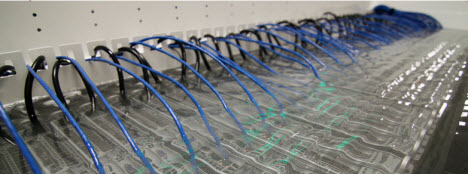The modern HPC community is now tasked with supporting more workloads, more users and a lot more information. The proliferation of resource-intensive workloads has created a new, highly dense data center infrastructure which now must handle a lot more requests. This multi-tenant environment revolves around new types of converged infrastructure which – although is much more efficient and powerful – created new challenges around cooling and management.
New ways to optimize server cooling and energy efficiency began to emerge when traditional control methods began to lack in efficiency. Although many initially thought that liquid and servers should probably never mix – what if the server cooling is done in a completely controlled and secured environment? Liquid submersion cooling has the potential to revolutionize the design, construction, and energy consumption of data centers around the world. Yet the idea of submerging servers in liquid is often met with trepidation and skepticism in spite of OEM certification, successful long-term testing, substantial cost savings, enormous environmental benefits and a large install base of current customers.
This white paper from Green Revolution Cooling breaks down those concerns and looks at the direct the advantages of liquid submersion cooling and, in particular, takes a closer look at GreenDEF, the dielectric mineral oil blend used by Green Revolution Cooling, a global leader in submersion cooling technologies. Further, the paper will address concerns of potential adopters of submersion systems and explain why these systems can actually improve performance ¡n servers and protect expensive data center investments.
It’s important to understand just how much power high-density data centers are currently using to cool their servers. As much as 40% of their total energy goes to that effort. Submersion cooling changes this equation completely. Gone are the fans that pull air through various vents, away go the air conditioning facilities needed to bring down ambient air temperatures to pull sufficiently cool air through said vents, and out go space requirements for adequate air circulation. In fact, the liquid in which servers are submerged itself requires far less energy to be cooled than ambient air and can reach temperatures much closer to the ideal operating temperature of the servers themselves since the cooling surface is larger and continuous.
Download this white paper on submerged servers from the insideHPC White Paper Library.





